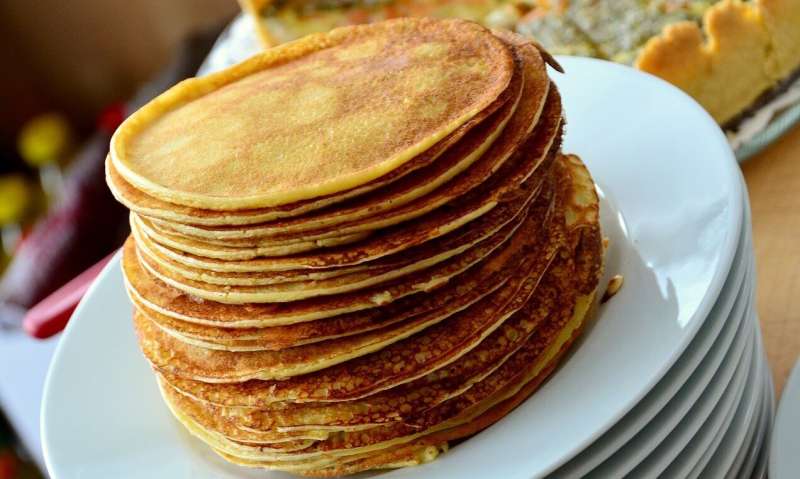June 20, 2019 report
Using fluid dynamics to perfect crêpe cooking techniques

A pair of fluid dynamics physicists, one with Ecole Polytechnique, the other the University of Canterbury, have used their respective backgrounds to develop the optimal way to fry a crêpe. In their paper published in the journal Physical Review Fluids, Edouard Boujo and Mathieu Sellier describe their approach to finding the best way to cook a crêpe.
The study began when Sellier became frustrated with his efforts to make a very flat crêpe—most people who eat crêpes would no doubt agree that flat is the optimal shape. Lumpy or bumpy crêpes tend to cook unevenly, resulting in some parts cooking either too much or too little. Sellier recalls his wife pointing out that as a physicist specializing in fluid dynamics, he should be able to figure out how to best pour and cook a simple crêpe. Intrigued, he paired with Boujo to do just that.
To come up with the best technique for getting crêpe batter to lay down in the pan, the two created a simulation that showed both the pan and the batter in action. To come up with an optimal approach, the researchers applied adjoint optimization—a math-based approach that takes into account the motion of fluids in a moving container. After tweaking, the simulation showed the researchers the best way to cook a crêpe.
The simulation suggested the best technique was pouring the right amount of batter onto a hot frying pan and then tilting the pan quite steeply, forcing the batter to run downhill all the way to edge of the pan. Next, the pan should be rotated in a way that forces the batter to spread to other parts of the pan—until it is completely covered. The angle of the pan should be gradually reduced during the final step until the pan lies flat on the stove.
The researchers report that their results showed an 83 percent improvement in crêpe uniformity and a seal of approval from their delighted daughters. They note that their simulation could also be used for other liquid applications, such as making chocolate or applying coatings to smartphone screens.
![Contours of film thickness h(x, t) for the optimal harmonic kinematics minimizing U(tf ), obtained with the Monte-Carlo method. Credit: arXiv:1901.06028 [physics.flu-dyn] Using physics to find the best way to fry a crêpe](https://scx1.b-cdn.net/csz/news/800a/2019/5d0b6e94471db.jpg)
More information: E. Boujo et al. Pancake making and surface coating: Optimal control of a gravity-driven liquid film, Physical Review Fluids (2019). DOI: 10.1103/PhysRevFluids.4.064802 , arxiv.org/abs/1901.06028
© 2019 Science X Network




















